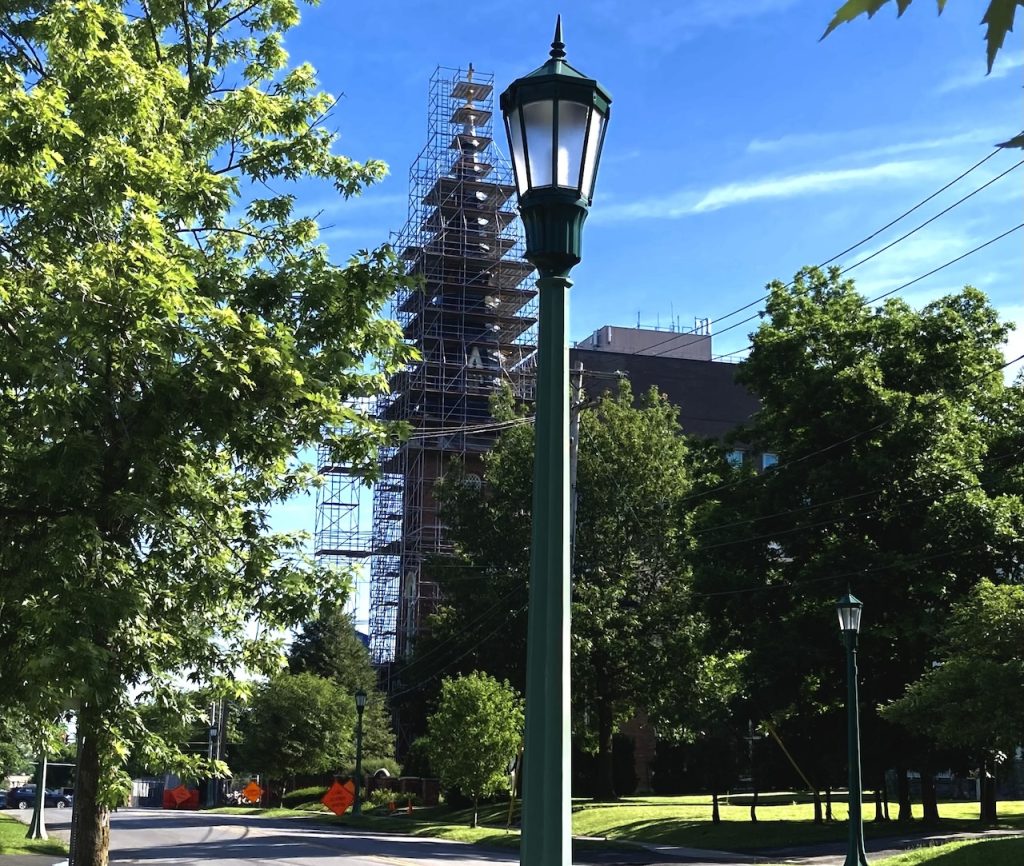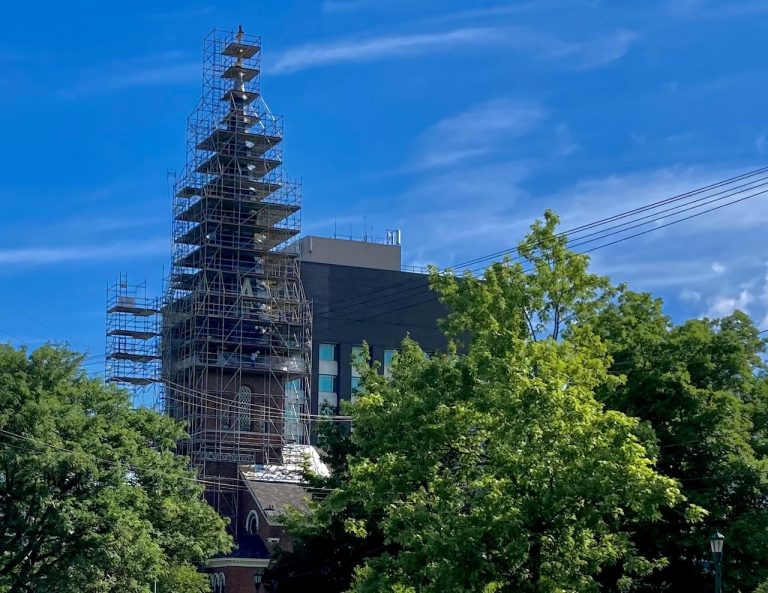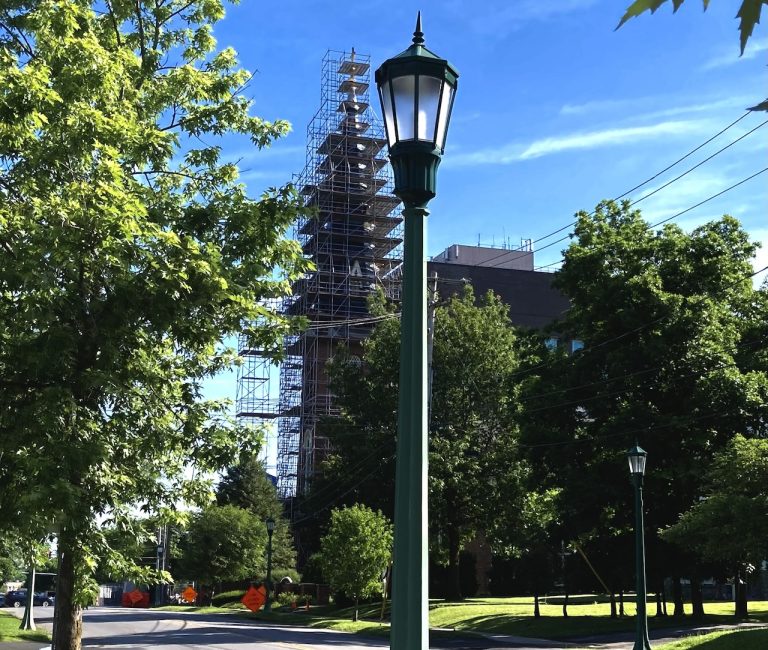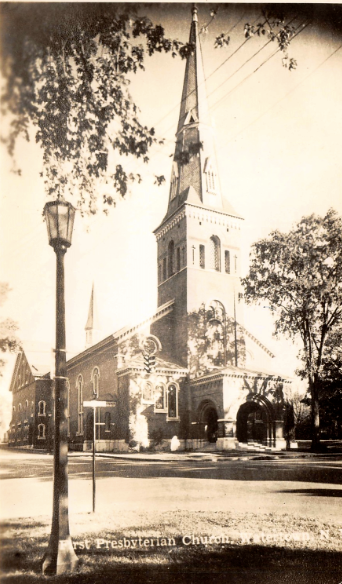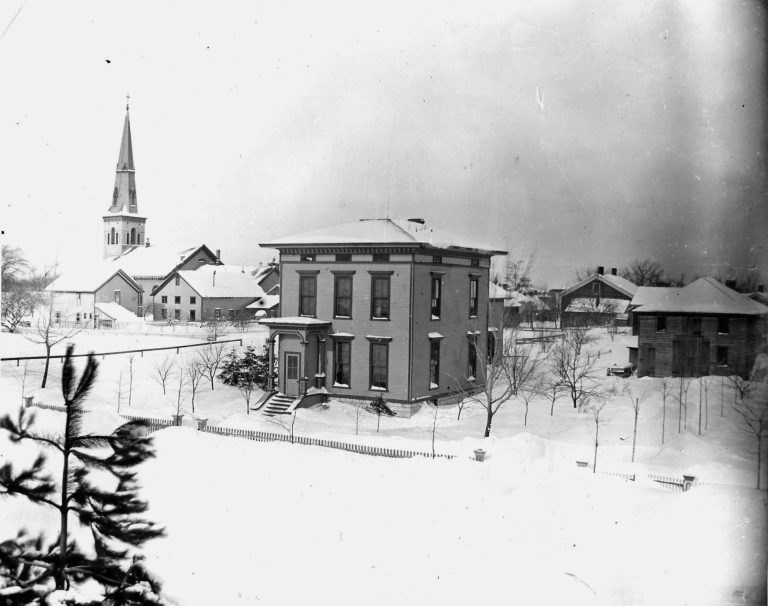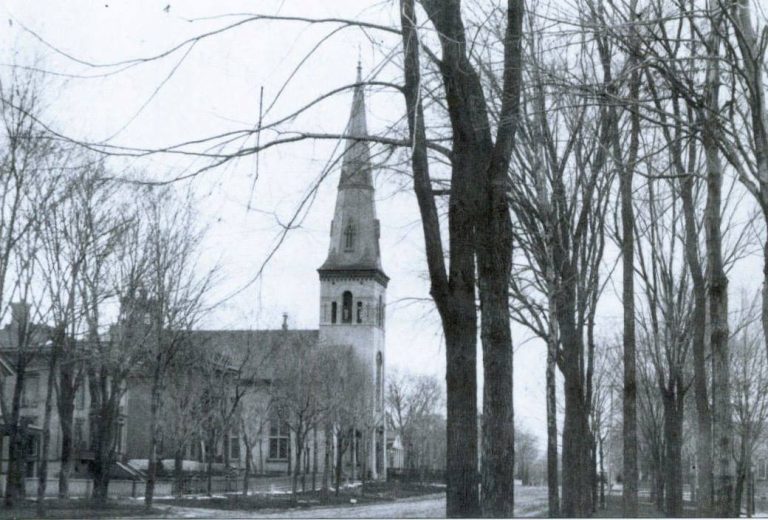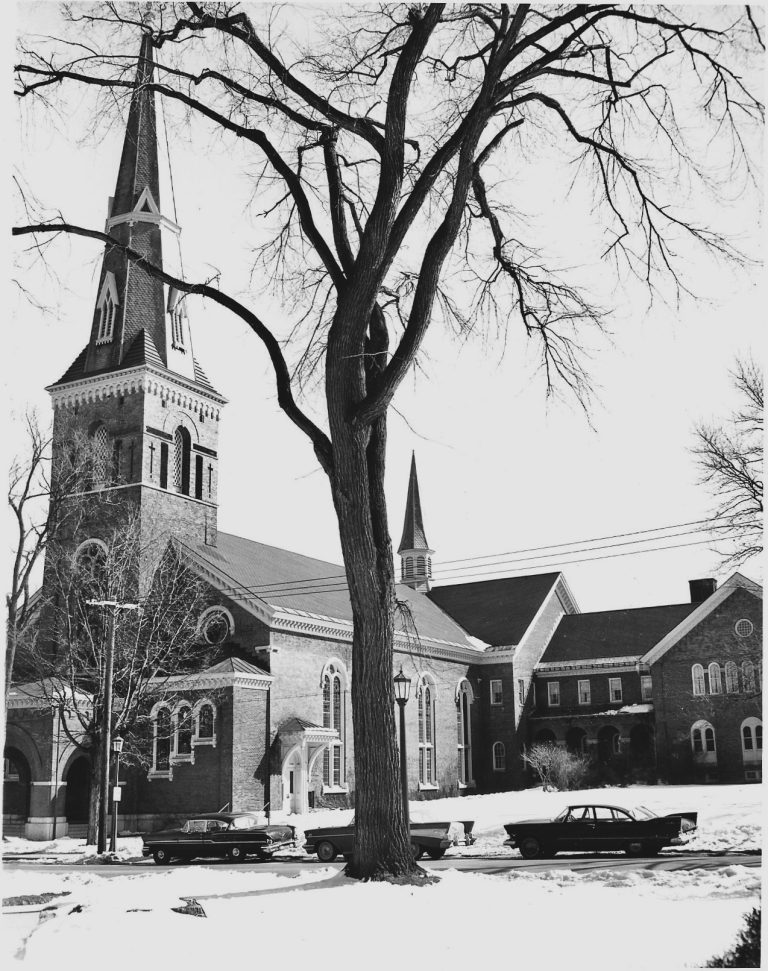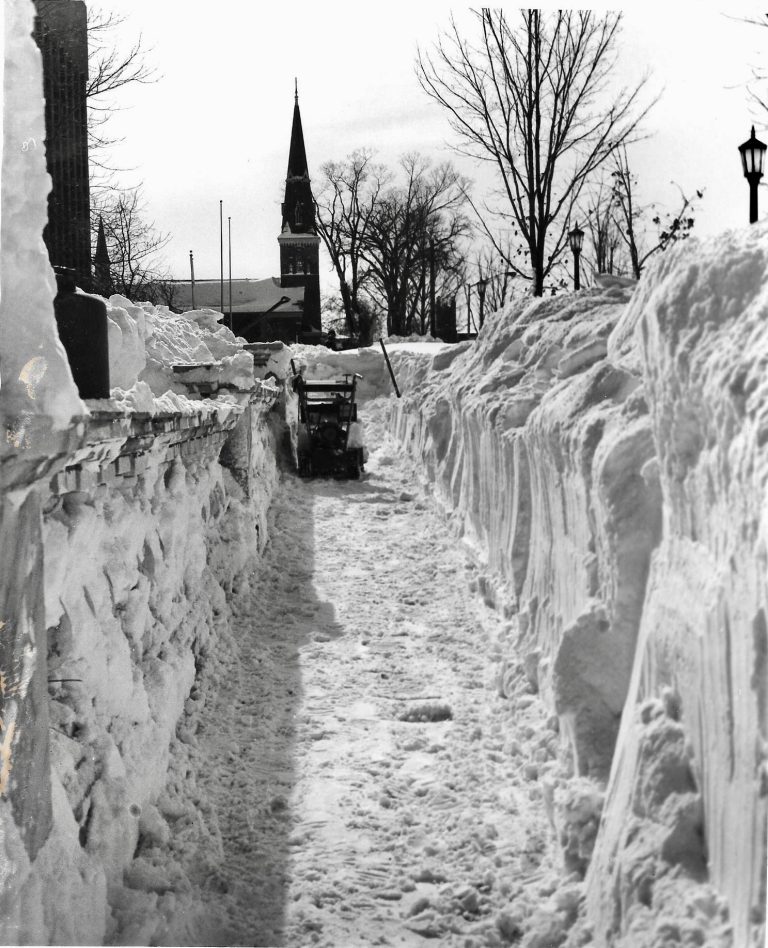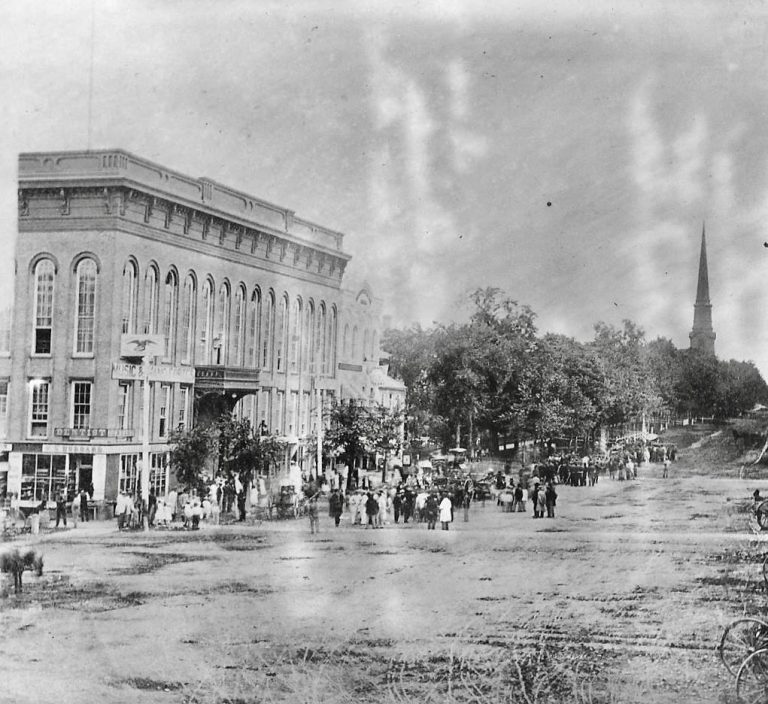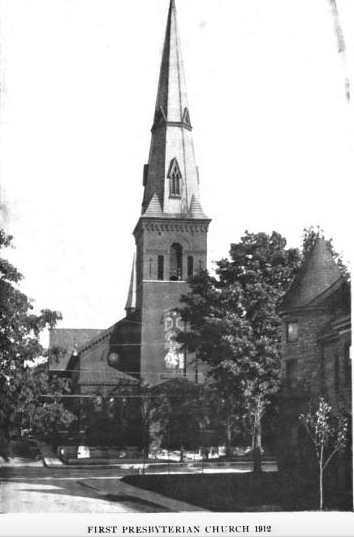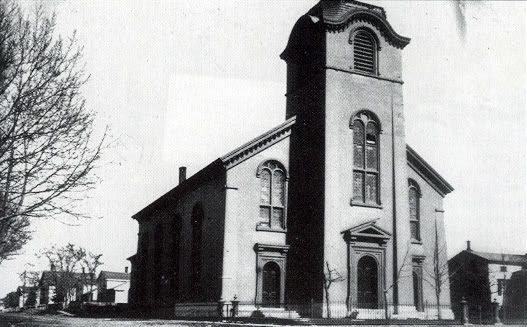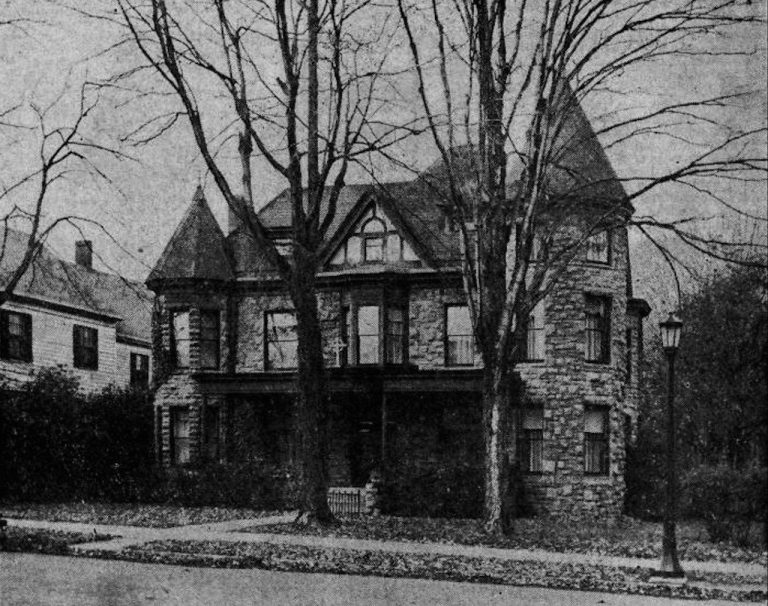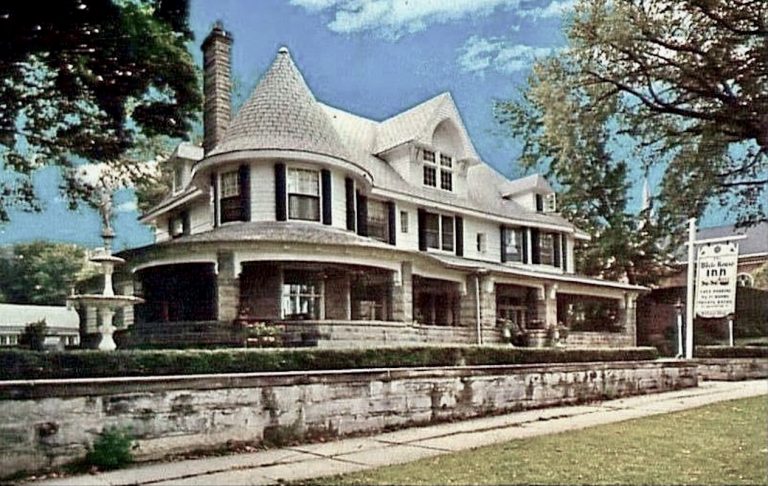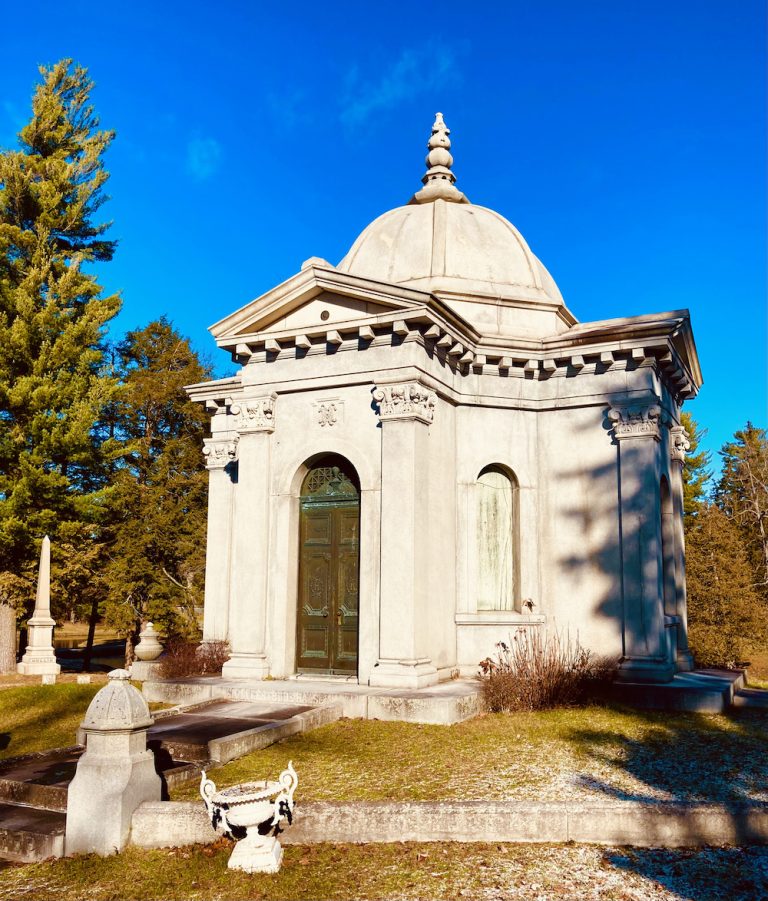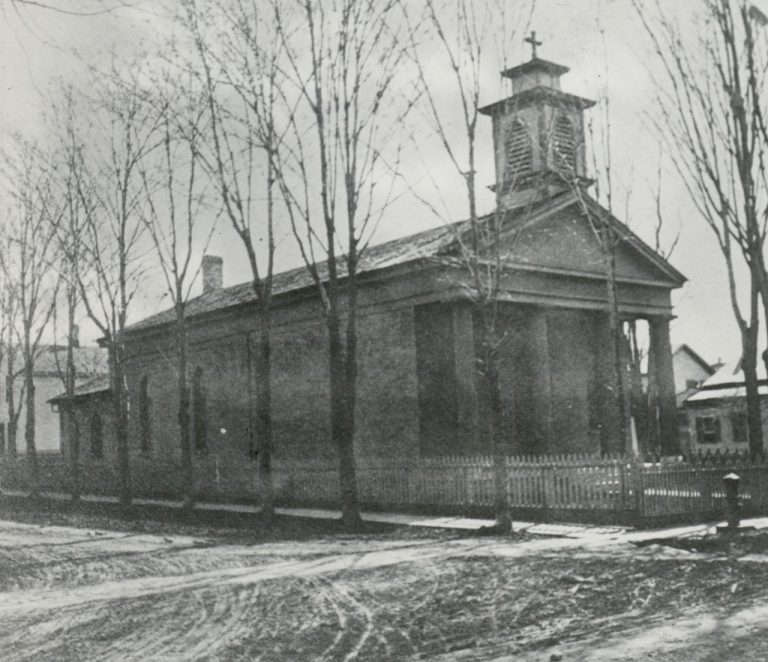Otis Wheelock Designed First Presbyterian Church Replaces 30-Year-Old Stone Church In 1851
Despite surviving the great fire of 1849, the congregation of the First Presbyterian Church on the corner of Academy and Washington Streets saw the booming construction in the village of Watertown as an opportunity to erect a new edifice. The then-current church, a two-story stone structure with a dome-tower over its entrance. It was the first church constructed in Watertown—but it was about to be replaced.
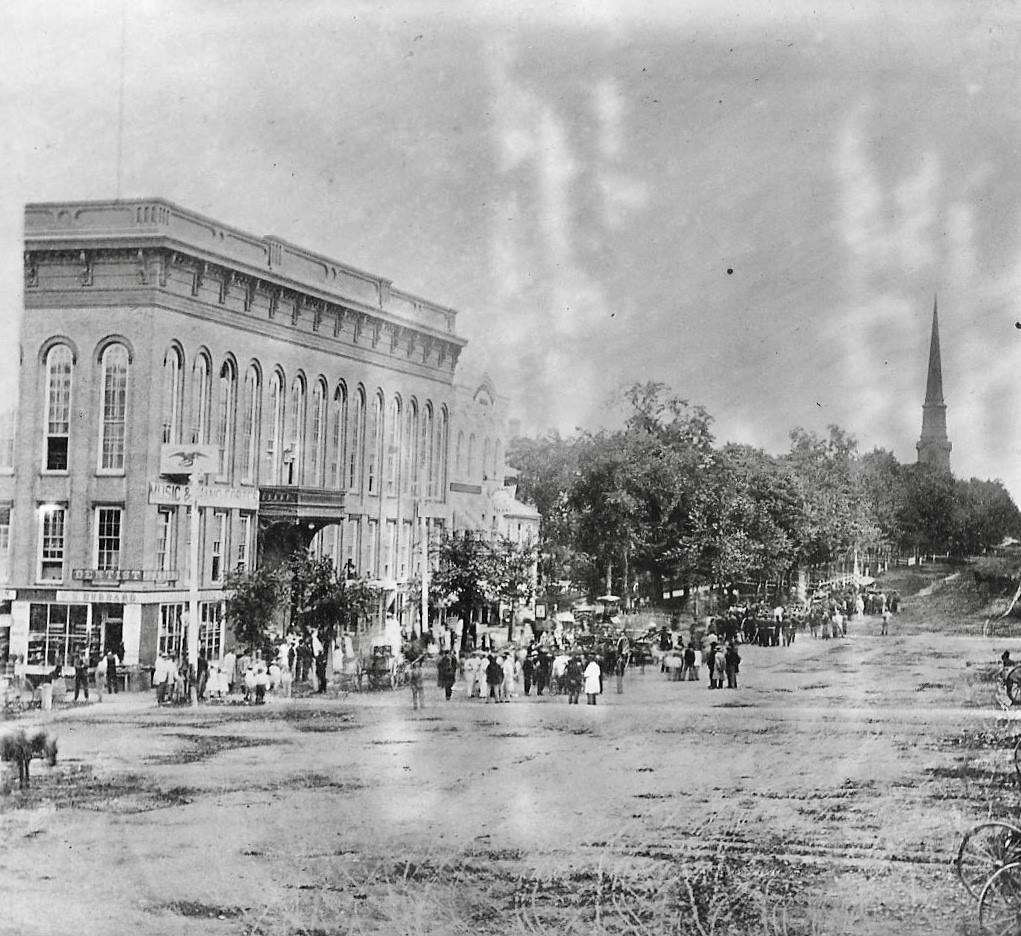
A committee was formed, including Orville Hungerford, Eli Farwell, Dyer Huntington, Edward S. Massey, Talcott H. Camp, and Wesley Sage, to devise a plan for the new church and its site and raise the necessary funds. As written in Years of Faith: A History of the First Presbyterian Church of Watertown, New York 1803 – 1953, by Frederick H. Kimball—
It was decided that whenever a subscription of $1,200 had been procured, the society should proceed to build a church on the site of the existing structure.
And so the congregation decided to take down the stone church which had stood since 1821 and construct a new edifice.
A building committee, including Adriel Ely and Isaac H. Fiske, in addition to the aforementioned names, and Edward S. Massey as its chairman, would see the plan’s fruition. Massey would also purchase the supplies and labor while supervising the construction. Local architect Otis L. Wheelock, who designed most of Watertown’s new buildings after the fire, also designed its newest edifice. However, not everything went as smoothly as hoped.
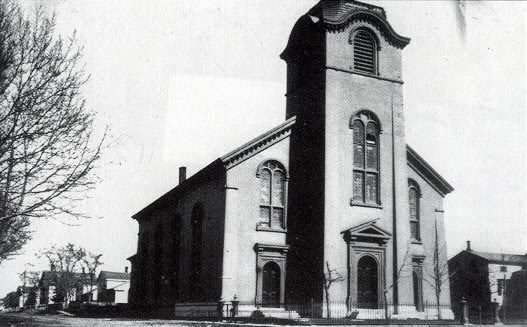
The New York Reformer reported the death of a worker during a thunderstorm during the First Presbyterian Church’s construction—
On Saturday last, during the thunder storm that passed over this region, lightning struck Mr. Michael Kehoe, while at work on the steeple of the First Presbyterian Church, now in progress of erection in this village. The fluid burned him most horribly, and though he soon recovered from the paralyzing shock, yet he survived the injury, caused by the burning, only a few hours, which were the most intense sufferings. He was a single man.
Upon its completion, the new First Presbyterian Church cost $17,000 and comprised 126 pews, accommodating 1,000 persons despite being a congregation of only 338. Just days before its dedication, Orville Hungerford passed away at age 61 at his stone home, described as being “diagonally across Washington Street from the church.”
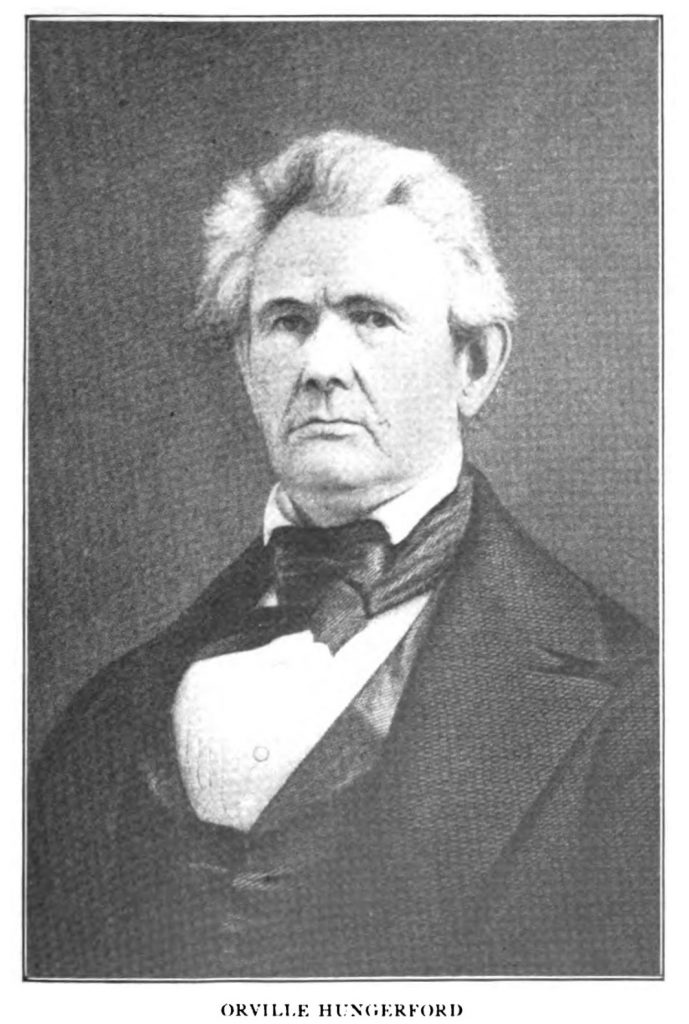
The former politician, railroad magnate, and banker was the largest subscriber to the church’s construction, having donated $1,000. His funeral was the church’s first service, coinciding with its dedication on April 10, 1951, filling the new church to capacity. The occasion was remarked upon in Years of Faith—
He had long looked forward to the time when the new church would be occupied but this he never lived to see. On Sunday morning after the dedication, the Rev. Dr. (Isaac H.) Brayton (whom Hungerford resolved the motion to hire Brayton to lead the congregation) preached a funeral sermon upon the occasion of Mr. Hungerford’s death.
Orville Hungerford also missed the first train’s arrival to Watertown for several months, for which he labored tirelessly for decades. The train pulled into a makeshift station at the end of Stone Street on September 5, 1851.
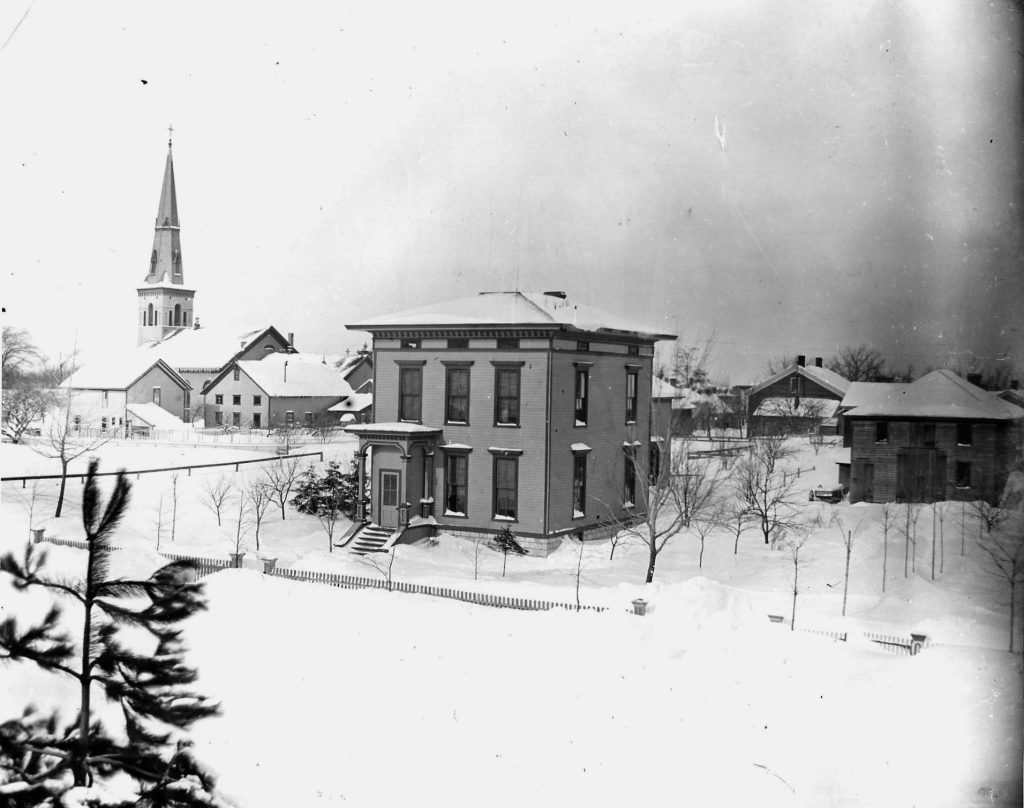
A centennial piece published in the Watertown Daily Times on April 9, 1951, put the time period in perspective—
We can hardly imagine the world of 1851. Millard Fillmore was president of the United States. Abraham Lincoln was unknown. Congress argued over territorial expansion. One year later Harriet Beecher Stowe was to write “Uncle Tom’s Cabin.” The years later, the Republican party was to be organized. As for Watertown, it was in its decade of progress. Paddock’s Arcade was nearly complete. The Woodruff House was completed the same year. The first telegram came to Watertown in 1850, which, significantly enough, was a quotation of the New York produce market.
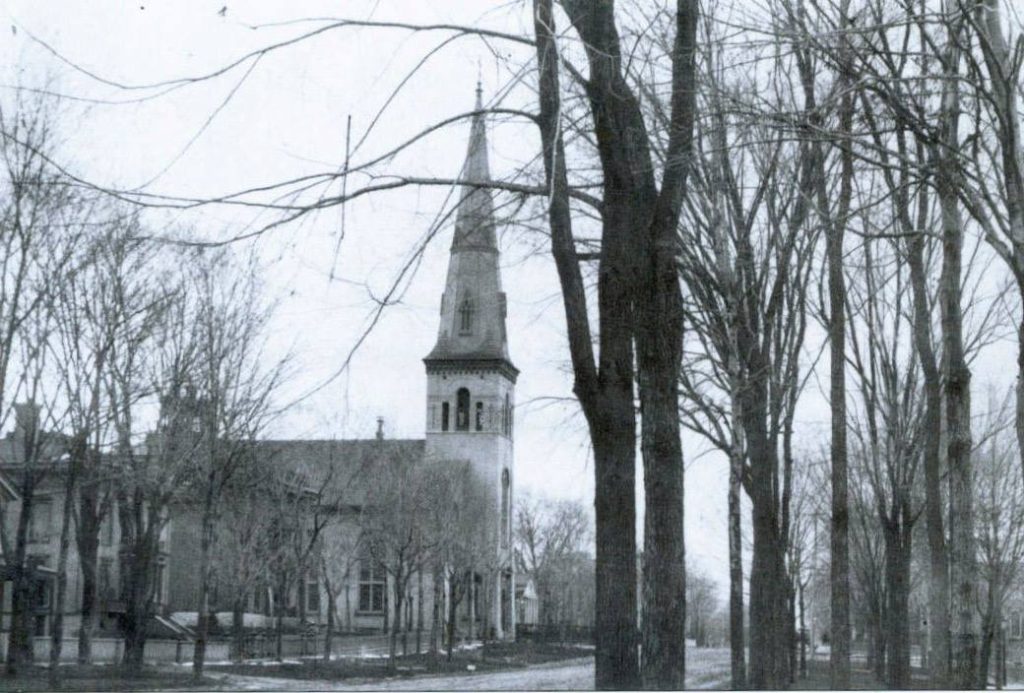
Over the years, the church would have many additions . . . and some subtractions. A new chapel, the present Fellowship Hall, adjoined the First Presbyterian Church in 1852, allowing it to expand its programs. In January 1873, however, the church lost its steeple shortly after eleven o’clock one night during a tremendous wind storm. As written in the January 16th edition of The Times—
It seems to have been lifted square off the brick foundation, above the bell, leaving that in its place, and though it must have fallen with a crash, the wind was blowing so furiously that people living nearest were hardly aroused from sleep. Others thought it was only the slamming of a wind. The loss to the church will be about $1,000. It is quite probable that the society will not adopt another high steeple. It has been a cause of fear in the immediate neighborhood for several years.
The spire was erected in 1850 at a cost of $4,000. It was replaced in the fall of 1875, at a cost between $4,000 and $5,000, comprised of about 30,000 feet of lumber covered in slate.
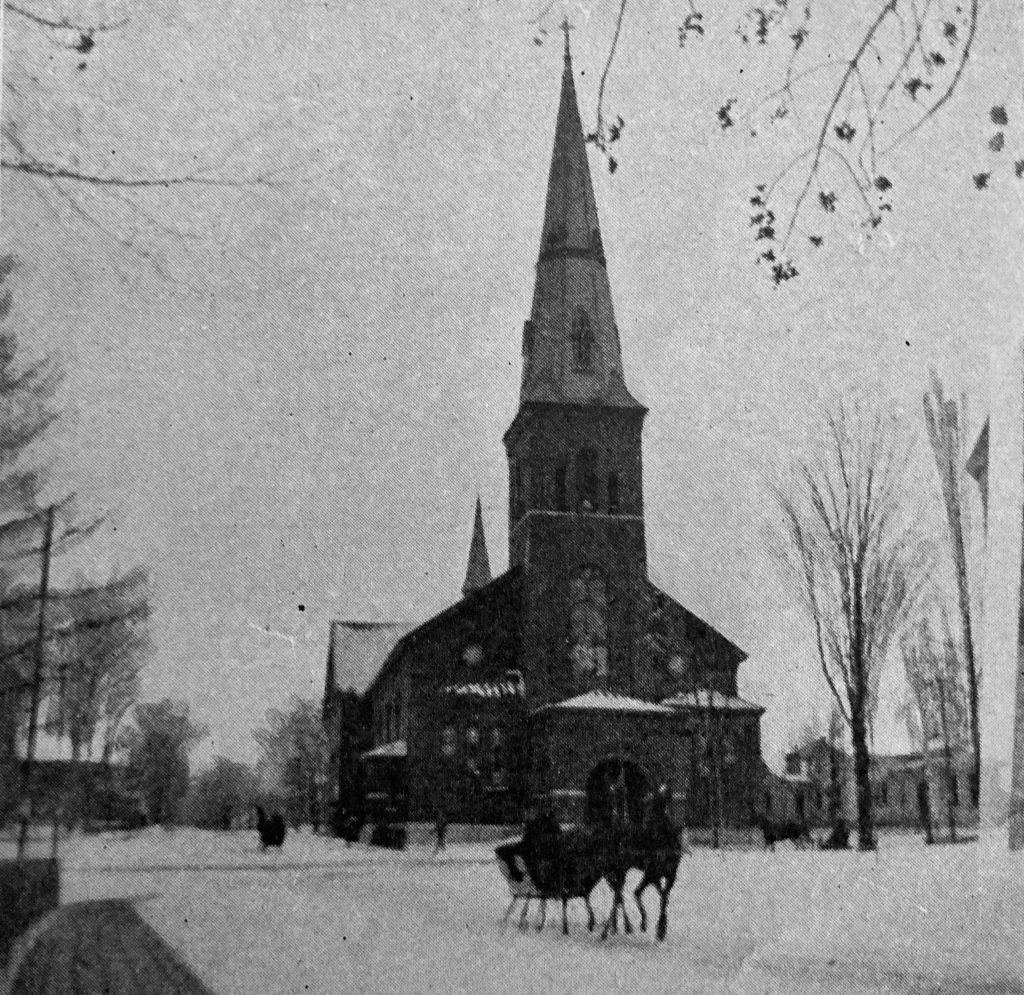
From 1926 – 1928, a two-story educational building was erected, containing a pastor’s study, chapel, women’s parlor, and Sunday School classrooms. The former chapel was converted to the current Fellowship Hall as a result.
In the summer of its centennial, the First Presbyterian Church was redecorated with a memorial gift Emma Sterling Lansing gave in memory of her sister and family, which included sibling and former Sec. of State Robert Lansing. Likewise, the chancel received a large Celtic cross above the communion table through Nellie Buel Wilmot‘s gift in memory of her family. The two were longstanding members of the church, with Emma’s dating back to April 1889 and Nellie’s June 1884.

Work began on the steeple’s restoration in 2024. Having stood atop the church for 149 years, the steeple had weathered Mother Nature’s worst, from blizzards and ice storms to wind storms and lightning, but concerns had grown over the years about its susceptibility to winds and water damage in its current state.
The First Presbyterian Church opted to restore it, as the cost of taking it down or restoring it was negligible. Initially, the project was estimated at $2.6 million, with the church raising the majority, $2.2 million. After restoration began, the architect in charge reported the damage was more extensive than initially thought, with damage to some of the brickwork and compromised woodwork needing to be replaced after some brick collapsed in May.
The church anticipates completing the restoration work this fall and is accepting gifts online at watertownfirstpres.org/give.
